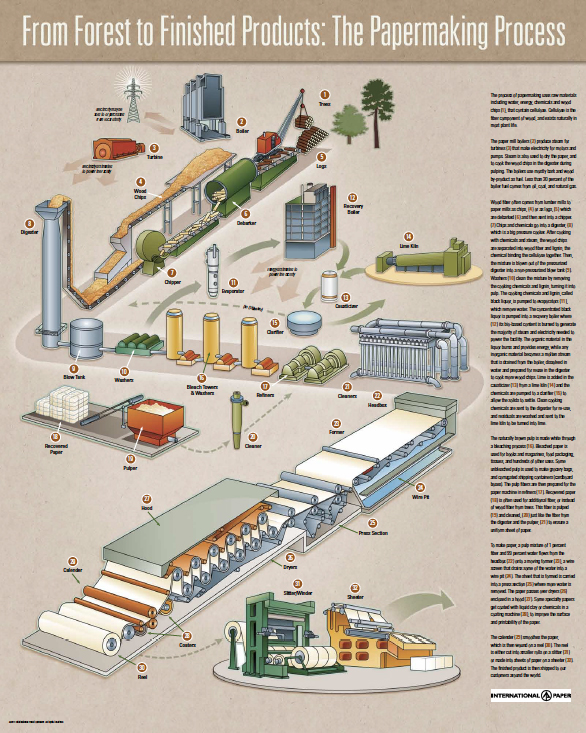The History of Paper and the Art of Communication
As long as man has been living on earth there has been a need to be able to communicate, record and express our thoughts. Early evidence of this can be found in caves all over the world where detailed drawings record the day’s hunting or prize catch.
A variety of substances such as charcoal and crushed coloured minerals were mixed with a liquid to create different colours. Different mediums were used such as carving on stone which created a very permanent record but was slow, writing on slate or wax tablets was quick but only suitable for current or quick messages.
In Ancient Egypt they used papyrus reeds to create sheets of writing material; this was done by weaving them together after which they were beaten to create a single sheet. The word ‘papyrus’ is where the name paper was derived.
Animal skins were also used as a writing medium; they were specially prepared and treated to make them suitable as a writing material. These writing mediums continued for 1,000s of years.
The development of paper
The development of paper as we know it today is credited to a Chinese inventor Ts’ai Lun who in about 105AD created the first sheets of paper by crushing bark from mulberry trees and mixing it with rags and other materials. Its use started to spread out from China but it wasn’t until 1150AD that paper making finally arrived in Europe.
Wooden blocks were used for making very early forms of imprint until 1453 A.D. when Johann Gutenberg invented the first printing press.
Early production methods involved dissolving the wood or rag fibres to produce a porridge like substance and then wooden frames with a fine wire gauze were used to strain off the water before it was compressed and dried, making it ready for use as a writing or printing medium. This method of production can still be seen in action at Wookey Hole in Somerset.
Since those early pioneer days the manufacturing process has changed beyond recognition.
A Frenchman Louis-Nicolas Robert is credited with inventing the first ‘continuous’ paper making machine in 1799 with the ability to produce sheets of paper up to 12′ long. This became the blueprint of the Fourdrinier machine. Due to a lack of finance the patent was sold in the early 1800’s and the Fourdrinier brothers based in Bermondsey, London directed and financed the further development of the machine.
In 1821 steam heated drying rollers were added so that the paper could be dried before being reeled up ready for finishing. These same concepts are still in use today albeit on a scale the Fourdrinier brothers wouldn’t even have dreamt of.
Today similar principles are applied but the most modern machines are over 10m wide and produce paper at over 60mph.
Drawings on cave walls
Writing on papyrus, parchment, stone
Making impressions in clay
Slate and wax tablets
First paper made in China
Printing invented in Europe
First continuous paper machine invented in France
Steam roller drying added
10m machines running at 60mph
Paper in the Making
Paper can actually be made from a range of raw materials including wood, cotton, rags, bagasse, straw, hemp and recovered fibres.
Of these wood is the most widely used as it provides very good quality fibres to ensure that the end product is of consistently high quality. Much of the wood used to produce paper is grown for the purpose in especially dedicated plantations. This ensures the efficient use of the land and keeps the fibre source close to the paper mill thus reducing the use of fossil fuels.
Wood fibre also has a very wide range of uses including office papers, textiles for clothing, packaging, pharmaceutical products, sausage skins, hygiene tissue and much more.
Modern paper making is still based on the essential methods that were determined in 1821 although there have been numerous improvements including:
- The introduction of a top wire to give a more even sided sheet.
- PCC (Precipitated Calcium Carbonate) which enabled the formation of the filler crystal to be controlled so as to achieve a better sheet formation and opacity while achieving a higher brightness.
- Hydraulic head boxes that help to disorientate the fibres as they go onto the wire resulting in a more stable sheet of paper.
- Improved drying cylinders to enable faster and more economic production.
- Highly sophisticated software programmes that control and monitor every stage of the production process to ensure that every sheet is of the highest quality.
- Increased precision at every stage of the process so that tighter tolerances can be maintained.
All these improvements have made it possible to produce thicker and bulkier papers with more stable properties. This has enabled mills with the latest equipment to produce copier papers using a substance weight of 70gsm that outperform the basic 80gsm products from a few years ago.
A Sustainable Product
All the wood used in the copier papers featured on this site is obtained from managed and renewable sources; this includes plantation timber, thinnings, trimmings and small trees from tree resources that are grown in conjunction with the timber industry.
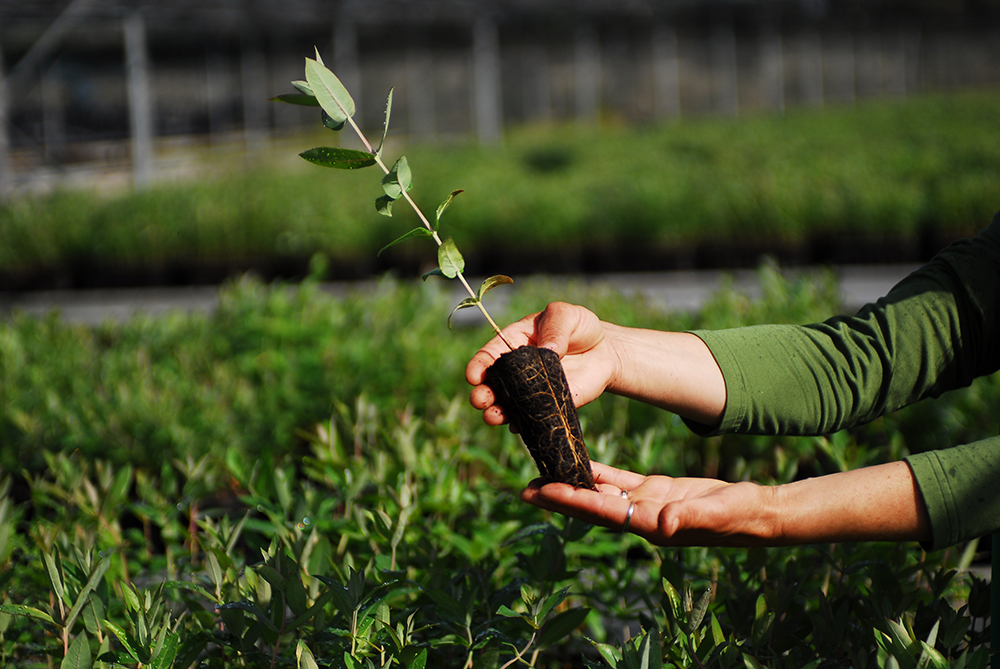
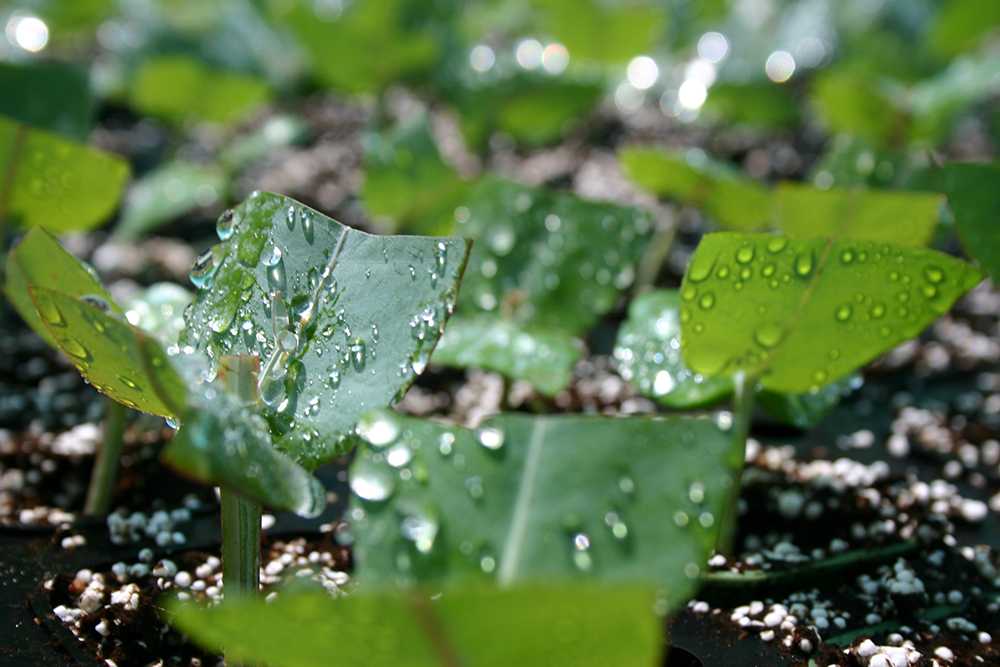
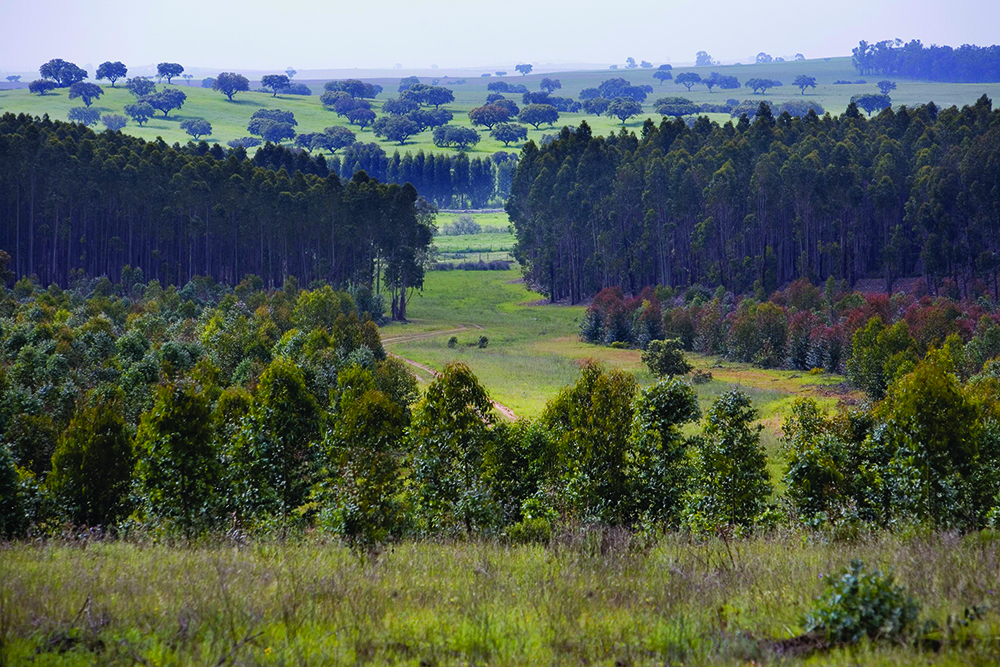
In addition the process uses energy, water and chemicals to extract the cellulose fibres from the timber. The basic process includes debarking the trees and then chipping the timber into small chips that are then mixed with chemicals and then cooked in what is essentially a giant pressure cooker to break them down into the cellulose fibre. This then goes through a washing process that removes the chemicals and lignin from the fibre.
All the waste lignin, bark etc. is used to produce energy to run the paper mill; as a result most modern paper mills use very little external energy and a minimal amount of fossil fuels.
The resultant pulp is then bleached using an Elemental Chlorine Free (ECF) process to produce a pulp that is white and ready for papermaking. The pulp is then mixed with water to create a pulp mix that is 99% water. This is then pumped to the head box end of the papermaking machine where it is evenly distributed onto a moving wire mesh. As the pulp proceeds, the water drains through the wire to the point where the pulp has enough residual strength to go through a series of rollers that compress the pulp removing more water before the sheet goes through a series of drying rollers to produce a sheet that is ready to go onto a jumbo reel.

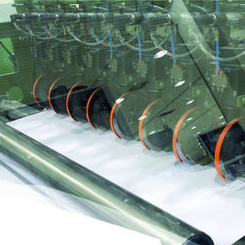
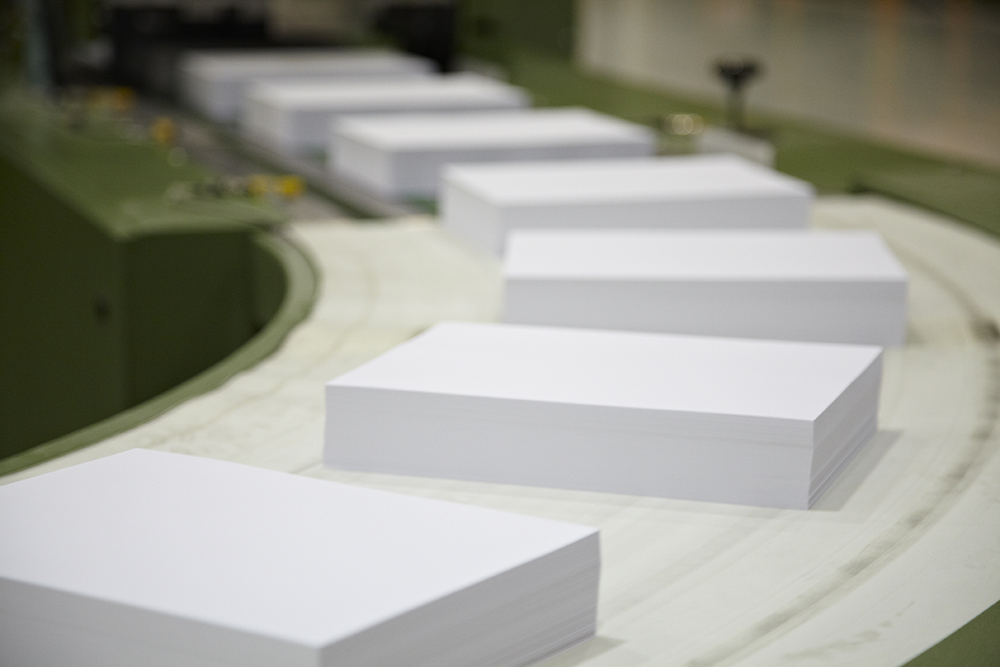
From here the jumbo reels are then stored ready for being converted into sheets. Different cutting lines are used depending on the final size of the sheet. Sheeting the paper is a high precision process with high speed rotary cutters being used to convert 5 reels at a time; this is then linked directly to the packing line where the product is wrapped, boxed and palletised using highly automated equipment.
The product is now ready for its onward journey to feed demanding office printers in a wide range of end user environments.


